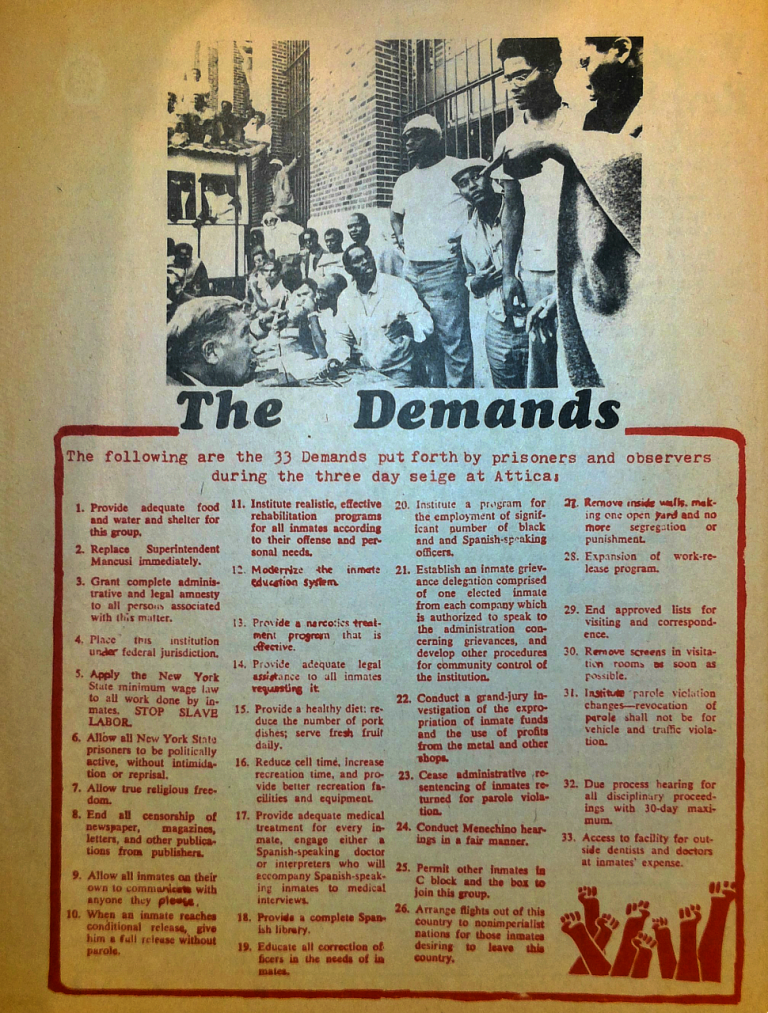Racism Affected the Journalists, Even in the Office
. . . How the Cub Reporter Was Picked as an Observer
Elder: I’m Not Going to Leave the Stage’
NBC Urged to Cancel Beijing Olympics Coverage
‘A Love Letter to Black Philadelphia’
Roland Martin Dresses Down Chris Christie
Nominate a J-Educator Who Promotes Diversity
Short Takes: The New Yorker diversity; Francisco Vara-Orta; Jackie Jones, Letrell Deshan Crittenden; RTDNA conference; NAB conference; Chester Higgins; “Locked on HBCU” podcast; Black Women In Radio and Library of Congress; “Violence in Chicago” weeklong series; Jammu and Kashmir raid; Myanmar seizure of journalist; Journal-isms position.
Homepage photo: Duke University
Support Journal-isms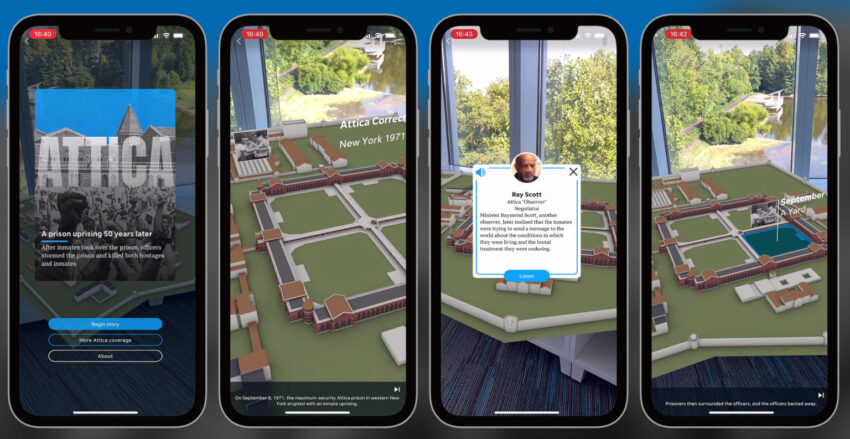
Racism Affected the Journalists, Even in the Office
Fifty years ago this month, John Johnson, network correspondent for ABC News, endured the incident that most altered his perception of race in the news industry. He was covering the uprising at Attica prison in upstate New York, the most damaging in American history.
As described by the Daily News in New York, “On Sept. 9, 1971, a four-day uprising of more than 1,000 prison inmates began in New York state’s Attica Correctional Facility, leading to the deadliest prison riot in U.S. history. Inmates took 42 staff officers and employees hostage as they demanded an end to ‘brutal, dehumanized’ conditions and alleged racially motivated abuse. After days of failed negotiations, and at the behest of Gov. Nelson Rockefeller, New York State Police and corrections officers launched a disastrous raid on Sept. 13, resulting in the deaths of 10 hostages and 29 inmates.”
Johnson, then 33, “was among those present during the negotiations between prison officials and inmates, and he was there during the uprising, when he witnessed the killing of inmates,” Pamela Newkirk reports in her 2000 book, “Within the Veil: Black Journalists, White Media.”
“During the ordeal, Johnson was pepper gassed and said a white guard at one point pointed a gun at him while yelling, ‘Nigger! Nigger! Nigger!’ “
Sixty-three percent of the inmates were Black and brown; 100 percent of the guards were white.
[Johnson amends the account, messaging Journal-isms, “I didn’t plead for my life! I yelled at the mother fucker : ‘Don’t Shoot’ several times while pointing my finger at him!”]
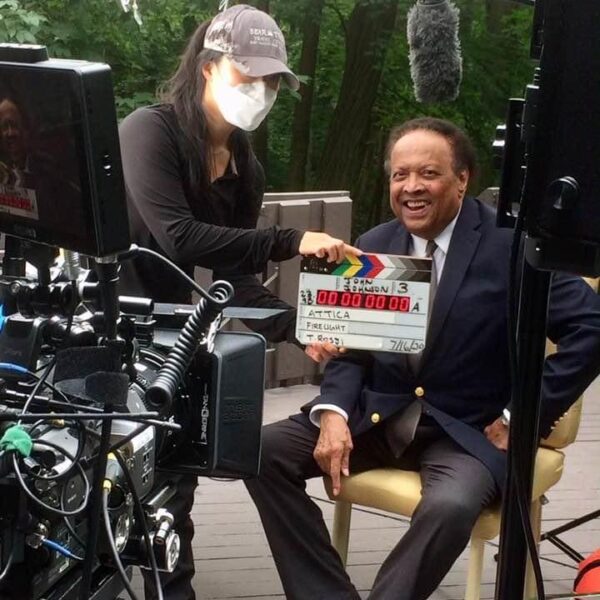
“Johnson said he pleaded at the guard not to shoot and managed to escape the anarchy. But when he reported his harrowing experience, ABC News, he said, chose not to broadcast his report, including his account of the slaughter of prisoners by the guards. Early on, Johnson had questioned the other reporters’ allegations that they had witnessed inmates slitting hostages’ throats, something Johnson said he never saw.
“What he did see, however, was a full-scale massacre by the guards. ‘But it was hard to take a black man’s word,’ he says,” Newkirk wrote.
Today, ABC News has a Black woman, Kim Godwin, as its president. That’s limited progress. But as the 50th-anniversary commentary about Attica is pointing out, the amount of progress made in prison reform is open to question.
The news media — and journalists of color in particular — were part of the story 50 years ago, and so must they continue to be.
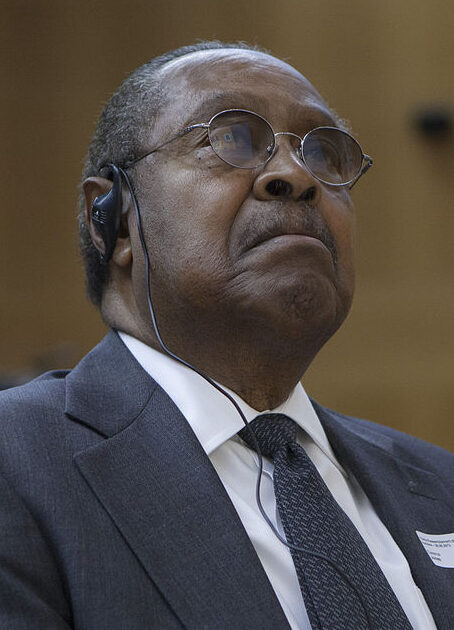 Clarence B. Jones (pictured), then 40, was publisher of the New York Amsterdam News at the time of the uprising. He was one of the “observers” chosen by Rockefeller to monitor negotiations between the Attica inmates and prison officials.
Clarence B. Jones (pictured), then 40, was publisher of the New York Amsterdam News at the time of the uprising. He was one of the “observers” chosen by Rockefeller to monitor negotiations between the Attica inmates and prison officials.
Jones wrote for HuffPost on the 40th anniversary of the uprising, “the rebellion at Attica is not merely a harrowing memory of desperate decisions, the struggle for control, the animal panic of cornered men, but a harbinger of things to come. In retrospect, the drifting cloud of teargas that ended the siege and started the bloodshed was a kind of smoke signal, pointing the way to dangerous trends in our very concept of justice: an incarceration society that punishes rather than rehabilitates and a new form of segregation. . . .”
Jones, who had been a confidant and personal legal counsel to the Rev. Martin Luther King Jr., was clearly disappointed with Rockefeller. In a sworn statement in 1989, Jones said that on the afternoon before the attack, the governor was indifferent when he was told that there were alternatives to storming the prison and said he had to bow to pressure for an assault despite the consequences to prisoners and guards held hostage, The New York Times’ William Glaberson reported. Rockefeller, considered a liberal, was seeking approval from more conservative Republicans as he sought to become vice president. He got the job.
Jones continued in HuffPost, “. . . in Attica, prisoners were treated almost like animals. In that sense, the prison was a microcosm of the penal world in general. In the list of grievances that came to light during the uprising, we learned much about what we, as a society, were doing in the prison system, with our tax money and in our name, that we would find repellent.
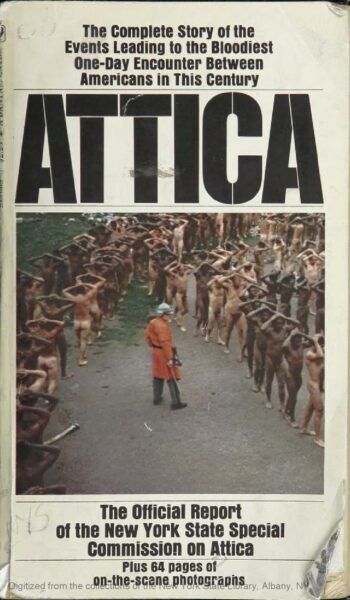
“The incarcerated in Attica were given only a single roll of toilet paper a month, for example. Only allowed to take one shower per week. Not only were Muslims denied their constitutional right to hold religious services, but pork (explicitly forbidden by the Quran) was often the only protein served in the mess. Newspapers were kept out of the prison library. Magazines that had any information about prison reform or prisoners’ rights were censored.”
In their own way, the Attica inmates advocated for media diversity.
The protesting prisoners asked that a Puerto Rican, a Black journalist and a white member of the press accompany the negotiators. Tom Wicker, New York Times columnist, was the white representative. Wicker was asked to join after writing a sympathetic column on the death of George Jackson, a Black revolutionary killed during an attempted prison escape in 1971. Wicker emerged as the leading spokesman for the negotiators and wrote a book in 1975 about the experience, “A Time to Die.” He, like Jones, was frustrated by the state’s response.
Richard Roth of the Buffalo (N.Y.) Courier-Express, a white journalist at the nearest metro newspaper, was also in the loop. He tells his story in the item below.
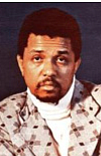 African Americans included Jones; Dick Edwards, managing editor of the Amsterdam News; Roland Barnes, cameraman for WGR-TV in Buffalo, who Wicker said spent more time in Block D during the uprising than any other newsman, and James Ingram (pictured) of the Michigan Chronicle.
African Americans included Jones; Dick Edwards, managing editor of the Amsterdam News; Roland Barnes, cameraman for WGR-TV in Buffalo, who Wicker said spent more time in Block D during the uprising than any other newsman, and James Ingram (pictured) of the Michigan Chronicle.
Rudy Garcia, a reporter for the New York Daily News, was apparently the Hispanic representative.
Broadcasting magazine reported that Buffalo’s “Myron Yancey, news director of black-oriented WUFO, who explained later that he ‘had known some of the brothers’ in Attica and that they, predominantly black, had wanted coverage by the black media, went in with the WGR-TV team.” WUFO was a one-man radio news shop.
Oddly, Johnson Publishing Co., the iconic producers of Ebony and Jet, did not cover the uprising, according to Karen Mitchell, who wrote in her master’s thesis at the University of Missouri, “Given [John H.] Johnson’s dislike for bad news involving Negroes, this absence might have been expected. However, given the reported level or brutality against the unarmed prisoners and the number of black inmates at the prison and killed in the riot, this lack of coverage seems inexcusable.” She wondered whether there was “professional jealously” over Jones’ involvement.
Cinda Firestone discussed Barnes, 22 at the time of the uprising, as she recalled making her 1974 documentary “Attica.”
“He was in rather a peculiar position regarding the footage because he was on assignment for a TV station in Buffalo to do something else. He’d said, ‘I would really like to go to Attica and film,’ and they said ‘no, no, it’s not important,’ and asked him to go to a cornerstone laying or whatever it was. Anyway, he disobeyed the station and went off to film Attica.
“The inmates then let Barnes inside the prison during the days of negotiation and stalemate. Before that Russell Oswald [chief of New York state’s penal system] appeared to be saying one thing to the inmates, and something different to the outside television crews. The inmates were watching television, saw Oswald apparently lying and said, ‘There has got to be a camera crew in the yard, otherwise you will tell us one thing and the television and newspapers will hear something else, and we won’t be able to do anything about it.” So Oswald gave permission for Roland and his crew to go inside.”
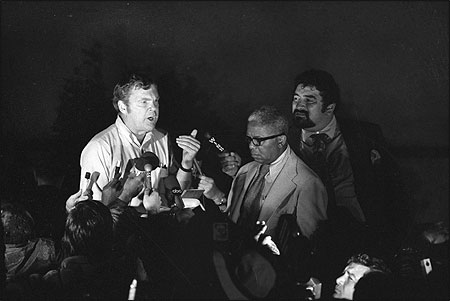
Ingram, then 32, was a member of the Attica Observers Committee. “During the ’70s and ’80s, Ingram’s column appeared in the Michigan Chronicle and his voice was heard on WJLB, where his boxing show was extremely popular,” Herb Boyd reported in the Amsterdam News. Boyd wrote that Ingram had been arrested during the 1967 Detroit uprising and that his columns were sympathetic to the plight of the incarcerated. Ingram wrote that when he entered D Block with two white reporters, “I felt the ‘hate stare’ of the all-white guards.”
Ingram would later testify before the House Judiciary Committee, telling fellow Detroiter John Conyers, D-Mich.,that he opposed Rockefeller’s nomination to become vice president and that “my life was threatened by a prison guard in full view of my so-called State police escort as I entered the prison on that Monday morning, September 13.”
He said, “Mr. Rockefeller bears responsibility for Attica prison, and thus some culpability for it, and perhaps this is merely a reflection of the warped cultural values of too many in this country that places more value on material wealth than on the value of human life.”
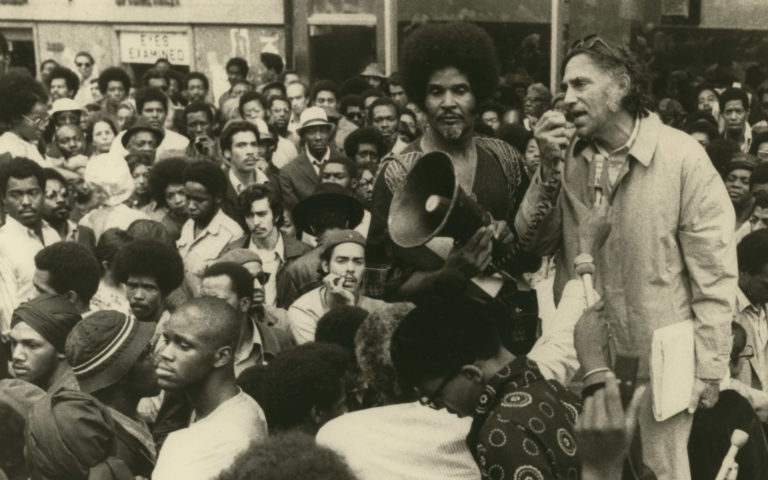 Garcia represented the Daily News. Lawyer William Kunstler (pictured speaking at Attica), advocate for progressive causes and another member of the Observers Committee, excoriated the news media when outlets took the word of prison officials who said that inmates had slit the throats of hostages. It was later confirmed that the hostages who died took the bullets of law enforcement, and that is how the News now reports the incident.
Garcia represented the Daily News. Lawyer William Kunstler (pictured speaking at Attica), advocate for progressive causes and another member of the Observers Committee, excoriated the news media when outlets took the word of prison officials who said that inmates had slit the throats of hostages. It was later confirmed that the hostages who died took the bullets of law enforcement, and that is how the News now reports the incident.
However, Garcia had written, “As I walked through the front gate of Attica prison this afternoon, a day after rioting inmates had asked me to come in to interview their hostages and tell the world of their condition, I was struck by the enormous difference in the atmosphere of the place . . . Just before the entrance to “No man’s land,” the section held by the inmates, there were six crates of primitive hand-made weapons, laboriously put together by the inmates. The wooden handles with sharpened pieces of metal taped to their ends seemed scarce answers to the .270 caliber magnum rifles, yet they, too, could take their toll — as witness the nine dead hostages.”
The day before, Garcia wrote of the townspeople, “Though at first expressing the natural good manners typical of placid small towns in this upstate area, the mood of some has turned surly. The press is harangued for ‘giving too much publicity’ to the more radical types involved in the negotiations such as Black Panther Bobby Seale and attorney William Kunstler.
“The hostility to blacks which had been somewhat hidden during the first two days of the vigil has surfaced with mutterings of various home-grown methods of taking care of the ‘niggers.’ ”
Johnson had the last word on those at ABC who would not run his pieces. “The specific reason why ABC failed to broadcast Johnson’s account is not known,” Newkirk wrote. “But the network did send other reporters to the scene and Johnson said his credibility was called into question. While Johnson was questioned by his own network, he was interviewed by other news services about his eyewitness account. His experience inside the prison walls was also featured some twenty years later in the PBS documentary Eyes on the Prize.
“In it, an emotional Johnson is shown reporting on the uprising, still shaking from his harrowing ordeal. And Johnson’s contention that the guards, and not the prisoners, were the aggressors was later borne out by investigations which showed that all of the dead and injured were victims of the guards, not the inmates. . . .”
“Johnson stayed in the business until 1997, when at age 59, he walked away from a four-year, $3 million contact as an anchor for NBC’s New York City affiliate to care for his ailing father.”
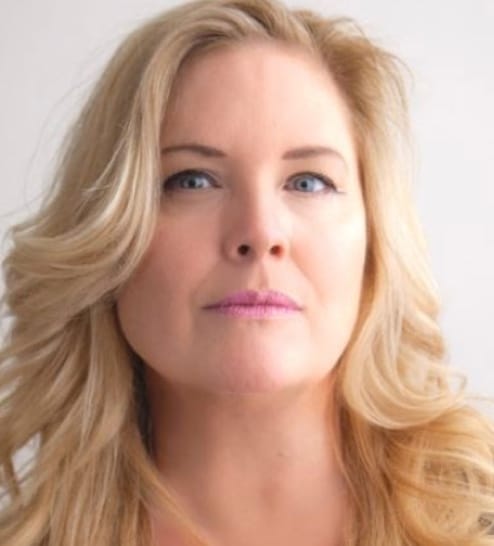 Heather Ann Thompson (pictured) of the University of Michigan, author of the Pulitzer Prize winning “Blood in the Water: The Attica Prison Uprising of 1971 and Its Legacy,” is being quoted by several outlets on the commemoration of the uprising.
Heather Ann Thompson (pictured) of the University of Michigan, author of the Pulitzer Prize winning “Blood in the Water: The Attica Prison Uprising of 1971 and Its Legacy,” is being quoted by several outlets on the commemoration of the uprising.
She wrote in Time, “Today, even many of the most tough-on-crime voters have come to recognize that handling so many social and economic problems via the criminal-justice system has cost this nation dearly. And with that recognition has come the very real possibility of criminal-justice reform.
“But for at least a decade now, attention has been devoted almost solely to the drivers and consequences of this explosion in America’s prison population, not to the places where mass incarceration is experienced firsthand. And even though the criminal-justice reform movement has managed to move mountains on critically important issues ranging from sentencing reform to drug laws, when it comes to reducing the number of people still in prison in this nation, the needle has barely moved.”
Last year, the Journal-isms Roundtable heard from reporters covering prisons who talked about the rapid growth of COVID among inmates, funding challenges, lack of oversight and inmate overcrowding.
On Tuesday, the Justice Department announced an investigation into Georgia prisons, where at least 26 people died in 2020 by confirmed or suspected homicide, and 18 homicides, as well as numerous stabbings and beatings, have been reported this year, Katie Benner reported for The New York Times.
On this 50th anniversary, C.J. Ciaramella wrote Monday for Reason, “Prisons are the problem no one wants to see. Fifty years after Attica, we seem to have buried the truth about them better than any ass-covering bureaucrat could have hoped for.”
How the Cub Reporter Was Picked as an Observer
By Richard Roth
Richard Roth is associate professor emeritus of journalism at Northwestern University. He wrote this remembrance for this column.
 I had just finished university when I drove into Buffalo to start a job I had accepted at the Courier-Express on June 1, 1971.
I had just finished university when I drove into Buffalo to start a job I had accepted at the Courier-Express on June 1, 1971.
As the new, cub reporter, I got all the soft assignments, as a way for the editors to evaluate me in person. One such soft assignment was to attend an “open house” at Attica prison, which had been renamed a “correctional facility” with a “superintendent” (previously titled “warden.”).
The “open house” was the idea of the state’s new commissioner of corrections, Russell Oswald, the reformer who had been brought in from California. The open house was to allow the public (via the press) to go beyond the prison visiting room for the first time ever (previously, only state legislators and grand jurors were allowed inside the prison).
The open house was led by the old warden/now superintendent Vincent R. Mancusi, and a couple of more polished deputies and spokesmen. There were a half-dozen or so reporters. Mancusi showed us rows and rows of cages/cells, each with a man inside. They were as curious about us as we were about them, but we were not allowed to stop and talk with any of the inmates.
We were shown the dining hall (which I later learned had previously been known, and to the inmates still was, the “mess hall”), the factory where the inmates made metal filing cabinets for state offices (oh, and they also made shivs for themselves — but Mancusi left out that tidbit); the yards, with basketball hoops and other amenities for the men’s recreational; etc.
Anyway, I went back to the office and wrote a story about what I had seen and what I had been told.
The next day, after the story was published, my phone rang. On the line was a woman who had read the story. “Boy, did they feed you a line of crap!” she said. Her son, Wayne Trimmer, was an inmate at Attica and she said his story was a lot different from the one I wrote.
Crap, I thought, I had just violated the first rule of journalism: I had produced a one-source story (it was the first and last one I ever wrote, by the way). So I asked her to have her son put me on his visitors list so I could go get his version of Attica. I did.
And then I had him ask other inmates to get me on their visitors lists (these lists needed to be vetted by the prison staff to check backgrounds, etc.).
I spent much of the summer going out to the prison, listening, writing some stories, and somewhere along the line learning from one of the men that the inmates had put together a “manifesto” of demands for change inside the prison, and had sent that “manifesto” to Oswald (prison guards opened a lot of outgoing mail, but were forbidden to intercept any mail addressed to Oswald or the governor).
I managed to get a copy of the manifesto and called Oswald to get his reactions and plans. By now it was late August and the inmates were getting antsy, anxious because they had not received a reply from Oswald, whose general view was that many of the “demands” were in line with some of the reforms he intended to institute statewide — but to do so he needed to get before the legislature for funding and some changes to existing laws. Remember, Oswald was new to New York and the legislature was not in session.
Well, one thing led to another and less than two weeks later, on Sept. 9, things boiled over. The riot began.
On the evening of Sept. 9, I was among many reporters standing outside the main entrance to the prison when a state spokesman, Gerald Houlihan, came out and said the prisoners had taken some guards as hostages and had issued some demands. Among those demands was that they wanted 12 or 13 (I don’t remember exactly how many) people brought into the prison to see for themselves and hear directly from the inmates about their grievances.
The people the inmates asked to be allowed in to serve on an Official Observers Committee were generally well-known: Bill Kunstler, Bobby Seale, Louis Farrakhan, State Rep. Arthur O. Eve, two Hispanic congressmen from New York City, and Tom Wicker of The New York Times.
One one guy not so well known, except to inmates he had interviewed: me! Yes, they had put my name on the list of luminaries. So I went inside the next day, with Wicker, et. al. We met there with Oswald. It was a very difficult time for me, because I was 23, and trying to remain a reporter, not making speeches as many of the others were, but instead talking quietly to Wicker about being a journalist in a very politicized situation. I mostly just took notes.
My editors in Buffalo were antsy, eager to get some copy from the inside, but I told them that it was understood that most things being said were off the record, at least while hostages were being. The editors didn’t like hearing that from the cub reporter.
- James Barron, New York Times: A Warning at Rikers on the Anniversary of a Deadly Prison Uprising
- The Challenger, Buffalo, N.Y.: Remembering Attica and the Buffalo Connection
- Tiffany Cusaac-Smith, Rockland/Westchester (N.Y.) Journal News: Attica prison riot hardened attitudes on incarceration but also planted seeds for reform
- Gary Craig, Rochester Democrat and Chronicle: 50 years after Attica: The unfinished business of our nation’s deadliest prison uprising
- Gary Craig, Rochester Democrat and Chronicle: Families congregate under sunny skies to remember dark moments of the carnage at Attica
- Daily News, New York: Remembering the Attica Prison riots (photos)
- C. Gerald Fraser, New York Times: Black Prisoners Embrace New View Of Themselves as Political Victims (Sept. 16, 1971)
- Amy Goodman with former Attica inmate Tyrone Larkins, Democracy Now!: Former Attica Prisoner Describes Racist, Brutal Treatment That Sparked Deadly Uprising 50 Years Ago
- Amy Goodman, Democracy Now!: Betrayal at Attica: NY Violently Crushed Attica Prison Uprising Amid Negotiations, Then Covered It Up
- Emily Lang and Joseph Gedeon, Gothamist: Looking Back At The 1971 Attica Uprising: What Set The Stage For The Deadly Riots
- John J. Lennon, Marshall Project: How Nearly 2,000 Cameras Tamed America’s Most Notorious Prison
- Matthew Leonard, Rochester (N.Y.) Democrat and Chronicle: The price we still pay. Why we are still reporting on the Attica uprising 50 years later
- Tambay Obenson, IndieWire: ‘Attica’: Filmmaker Stanley Nelson on Why the 1971 Prison Uprising Remains an ‘Evergreen’ American Story
- Thomas O’Neil-White, WBFO-FM, Buffalo, N.Y.: 50 years later: The legacy of the Attica uprising
- Kevin D. Sawyer, San Francisco Bay View: George Jackson, 50 years later
- Matt Williams, the Conversation: On 50th anniversary of Attica uprising, 4 essential reads on prisoners’ rights today
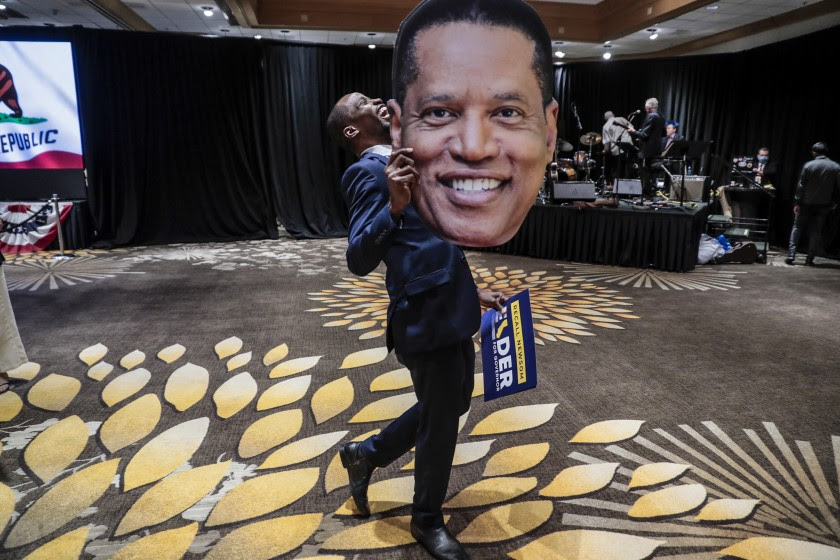
Elder: ‘I’m Not Going to Leave the Stage’
“Although the effort to recall California Gov. Gavin Newsom failed, the lightning two-month campaign appears to have had at least one clear beneficiary — Larry Elder,” James Rainey wrote Wednesday for the Los Angeles Times.
“The conservative talk radio host jumped to the front of the pack of 46 recall challengers soon after he entered the race on July 12, enhancing his brand as a media provocateur and potentially paving the way for a future run for office.
“His showing Tuesday, when he led the challengers by a wide margin, could establish him as the putative leader of the state’s Republican Party.
“Some of his most ardent followers have said they hope Elder will run next year, to challenge Newsom for a second time.
“Asked about a 2022 run, Elder told KMJ radio in Fresno on Tuesday: ‘I have now become a political force here in California in general and particularly within the Republican party. And I’m not going to leave the stage.’ . . .”
- Chris Aadland, Indian Country Today: Native vote mixed on California recall election
- León Krauze, Washington Post: Latinos showed up for Newsom, but some Latino men tilted right. Democrats need to pay attention.
NBC Urged to Cancel Beijing Olympics Coverage
“Some of the world’s largest broadcasters including American network NBC are being asked by human rights groups to cancel plans to cover next year’s Winter Olympics in Beijing,” Stephen Wade reported Sept. 7 for the Associated Press. “The Winter Games are scheduled to open on Feb. 4.
“The request comes in an open letter from rights groups representing minorities in China, including Uyghurs, Tibetans, Hong Kong residents and others.
“The letter, obtained by the Associated Press, was sent Tuesday to NBC Universal chief executive officer Jeff Shell and other international broadcast executives. NBC is paying $7.75 billion US for the rights to the next six Olympics and works closely as a partner with the Switzerland-based International Olympic Committee.
“Those payments are estimated to account for up to 40 per cent of the IOC’s total income. The letter says the broadcasters risk ‘being complicit’ in the ‘worsening human rights abuses’ in China. . . . “
“The IOC has repeatedly said it is only a sports body and its president Thomas Bach has declined to address or condemn the treatment of Uyghurs or other minorities in China. The IOC is also facing calls for a boycott, pressure on some of its 15 top sponsors, and some athletes speaking of the difficult situation they face.”
Carol Ko, senior director, communications at NBC Sports, did not respond to a request for comment.
- Jonah Shepp, New York: What Is China Doing to the Uighurs in Xinjiang?
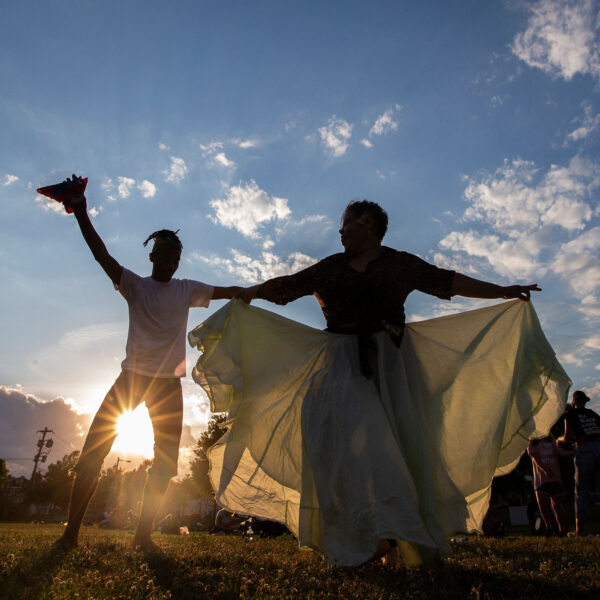
‘A Love Letter to Black Philadelphia’
“Over the last year, I’ve been working alongside a team of Black journalists at the paper to create this series. Wildest Dreams is our collaborative mini-anthology of storytelling about Black cultural inheritance, legacy and joy, told through essays, poetry, video and music,” video editor Raishad Hardnett wrote Wednesday for the Philadelphia Inquirer.
The headline reads, “A LOVE LETTER TO BLACK PHILADELPHIA.”
“Presented by the paper’s Black journalists, and with the help of some amazing contributors, we are creating a space for Black creatives in Philadelphia to share our work, and to honor both our ancestors’ dreams and our own. . . .
“Join our Wildest Dreams community on Instagram to take part in the conversation, or sign up for our newsletter for a behind-the-scenes look at the project. You can also listen to the music that inspired the Wildest Dreams project on Spotify. . . .”
- LeBron Hill, Ayrika Whitney and David Plazas, Better News: How The Tennessean tells stories for and with Black residents
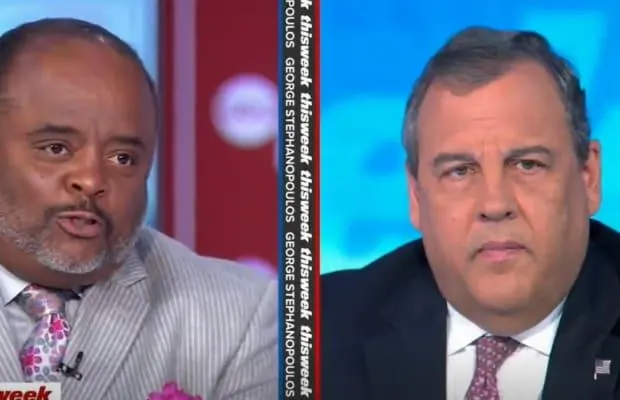
Roland Martin Dresses Down Chris Christie
Speaking at the Ronald Reagan Presidential Library last week, Republican Chris Christie, the former New Jersey governor, compared Donald Trump’s conspiracy-minded supporters to the John Birch Society in the 1960s, likened the former president himself to an authoritarian and flatly rejected the myth of a stolen election.
The about-face earned Christie a dressing-down from commentator Roland Martin, who appeared with Christie and Sarah Isgur, a veteran of the Trump Justice Department Sunday on ABC’s “This Week.”
The conversation went partly like this:
MARTIN: And I appreciate the speech, Governor, but the reality is this.
You have to admit, Sarah, you have to admit the role that you played in putting the person in leadership who is driving conspiracy theories. It’s one thing to condemn them after the fact, but you have to own up to the role that you played in putting the person in power.
The time…
ISGUR: We both ran campaigns against him.
MARTIN: No, no, no, no, no.
(LAUGHTER)
(CROSSTALK)
CHRISTIE: First off, I don’t have to admit anything to you.
MARTIN: Can I finish? Can I finish? Can I finish?
CHRISTIE: First off, I don’t have to admit anything to you.
And, second, I ran against Donald Trump in 2016.
SIMPSON: You also coached him for the debate, sir.
(CROSSTALK)
MARTIN: Here’s the deal. You ran against him.
But when a person has principles, morals and values, they do not support them even if you lose.
(CROSSTALK)
CHRISTIE: Well…
MARTIN: And what they say is — and what they say is, I choose patriotism and the country over party and power.
(CROSSTALK)
MARTIN: And the problem was, too many Republicans chose power and riding with Donald Trump, as opposed to patriotism and America.
CHRISTIE: I will sleep fine tonight with you judging my morals.
MARTIN: Well, guess what?
SIMPSON: It’s not just him.
MARTIN: As a voter who has 13 nieces and nephews, what I also want to see in America are Republicans and Democrats who have the guts to stand up to narcissists, to folks who lie, to folks who sit here and led a country in the wrong direction.
And what that man has unleashed on this country, any Republican who stood with him has to own it and accept the role that they played.
CHRISTIE: Yes. Well, that’s fine. . . .
- Matt Bai, Washington Post: Chris Christie comes back to reality
Nominate a J-Educator Who Promotes Diversity

Mei-Ling Hopgood, 2020 recipient
Beginning in 1990, the Association of Opinion Journalists, now part of the News Leaders Association, annually granted a Barry Bingham Sr. Fellowship — actually an award — “in recognition of an educator’s outstanding efforts to encourage minority students in the field of journalism.”
Since 2000, the recipient has been awarded an honorarium of $1,000 to be used to “further work in progress or begin a new project.”
Past winners include James Hawkins, Florida A&M University (1990); Larry Kaggwa, Howard University (1992); Ben Holman, University of Maryland (1996); Linda Jones, Roosevelt University, Chicago (1998); Ramon Chavez, University of Colorado, Boulder (1999); Erna Smith, San Francisco State (2000); Joseph Selden, Penn State University (2001); Cheryl Smith, Paul Quinn College (2002); Rose Richard, Marquette University (2003).
Also, Leara D. Rhodes, University of Georgia (2004); Denny McAuliffe, University of Montana (2005); Pearl Stewart, Black College Wire (2006); Valerie White, Florida A&M University (2007); Phillip Dixon, Howard University (2008); Bruce DePyssler, North Carolina Central University (2009); Sree Sreenivasan, Columbia University (2010); Yvonne Latty, New York University (2011); Michelle Johnson, Boston University (2012); Vanessa Shelton, University of Iowa (2013); William Drummond, University of California at Berkeley (2014); Julian Rodriguez of the University of Texas at Arlington (2015) (video); David G. Armstrong, Georgia State University (2016) (video); Gerald Jordan, University of Arkansas (2017), Bill Celis, University of Southern California (2018); Laura Castañeda, University of Southern California (2019); and Mei-Ling Hopgood, Northwestern University (pictured) (2020).
Nominations may be emailed to Richard Prince, Opinion Journalism Committee, richardprince (at) hotmail.com. The deadline is Oct. 15. Please use that address only for NLA matters.
Short Takes
- Kevin Merida, now executive editor of the Los Angeles TImes, was approached about the possibility of running ABC News, where network president James Goldston had recently stepped down, Joe Pompeo reports for Vanity Fair. “However, by midspring it was clear that Merida’s heart was in L.A.” Asked about achieving more diversity at the top of the news business, Merida said, “We need to develop those ranks to the point where they’re running big companies. The Walt Disney Company, Netflix, The Washington Post, the L.A. Times, and other places. That process is happening, but we have to accelerate it. That is the mission.”
- “On Tuesday, journalism and literature Twitter blew up after a user posted a 20-part thread decrying the lack of diversity among writers and editors at one of the most vaunted publications in the country, The New Yorker,” Anastasia Tsioulcas reported Wednesday for NPR. She also wrote, “Many readers of this thread were surprised to discover that it was written by a New Yorker insider: Erin Overbey, the magazine’s own archive editor. . . . In a comment emailed Tuesday to New York magazine, a spokesperson for The New Yorker wrote: ‘We’ve worked hard for years to increase the number of underrepresented voices at The New Yorker, and we’ve made significant progress — among our writers, in senior editorial positions, and across the entire enterprise. Nearly 40 percent of new hires at Condé Nast are from diverse and underrepresented backgrounds. While we don’t believe these tweets present a full or fair view of The New Yorker and its ongoing efforts, there is always more work to do, and we look forward to doing it.”
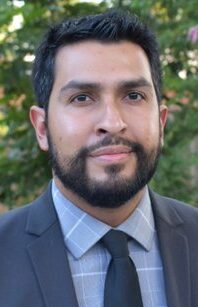 “Investigative Reporters and Editors is proud to announce its first director of diversity and inclusion: trainer and veteran journalist Francisco Vara-Orta (pictured),“ the association announced Wednesday. “Vara-Orta joined the IRE staff in February 2019 as a training director. While working as a trainer, he has conducted sessions on managing data and investigative reporting for journalists across the United States and internationally. The creation of this position is part of the steps IRE is taking to become a more inclusive space. . . .”
“Investigative Reporters and Editors is proud to announce its first director of diversity and inclusion: trainer and veteran journalist Francisco Vara-Orta (pictured),“ the association announced Wednesday. “Vara-Orta joined the IRE staff in February 2019 as a training director. While working as a trainer, he has conducted sessions on managing data and investigative reporting for journalists across the United States and internationally. The creation of this position is part of the steps IRE is taking to become a more inclusive space. . . .”
- As the new dean of Morgan State University’s School of Global Journalism and Communication, Jackie Jones said she’ll ensure that students learn to report based on community needs,” Billy Jean Louis reported Tuesday for the Baltimore Sun. “ ‘I want to look for opportunities to get in front of what is [a] cutting-edge delivery system of news and information and to ensure we are reaching out to the Baltimore community. And that we are reaching out to people who have felt largely ignored by the news media,’ said Jones, who succeeded founding dean DeWayne Wickham on Aug. 2. . . .”
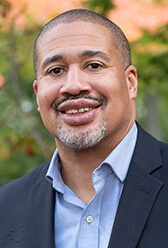 Letrell Deshan Crittenden (pictured) is joining the American Press Institute as director of inclusion and audience growth on Sept. 20, the institute announced Monday. “Dr. Crittenden joins API from Thomas Jefferson University in Philadelphia, where he was program director and assistant professor of communication. He specializes in issues related to diversity and inclusion in news and community-engaged journalism. . . .”
Letrell Deshan Crittenden (pictured) is joining the American Press Institute as director of inclusion and audience growth on Sept. 20, the institute announced Monday. “Dr. Crittenden joins API from Thomas Jefferson University in Philadelphia, where he was program director and assistant professor of communication. He specializes in issues related to diversity and inclusion in news and community-engaged journalism. . . .”
- The Radio Television Digital News Association has registered 206 people for its in-person national conference Sept. 23-24 in Denver, Dan Shelley, executive director and COO, told Journal-isms on Monday. “That is in line with the number we had hoped for,” Shelley messaged Journal-isms. “We deliberately planned a smaller-than-usual conference so that we could provide more participatory, ‘hands-on’ sessions, not traditional panel discussions in large, packed meeting rooms as we’ve always done in the past. We have also instituted COVID mitigation policies, including proof-of-full-vaccination and masking requirements.” Shelley also messaged, “In 2019 – our last pre-COVID conference – we were partnered with both SPJ and NAHJ in San Antonio and had about 1,900 attendees,” referring to the Society of Professional Journalists and the National Association of Hispanic Journalists.
- “The National Association of Broadcasters said Wednesday that it’s canceling its NAB Show live event, slated for Oct. 9-13 in Las Vegas. The organization cited the pandemic and Delta surge as having presented ‘unexpected and insurmountable challenges’ to hosting the show,” TVNewsCheck reported.
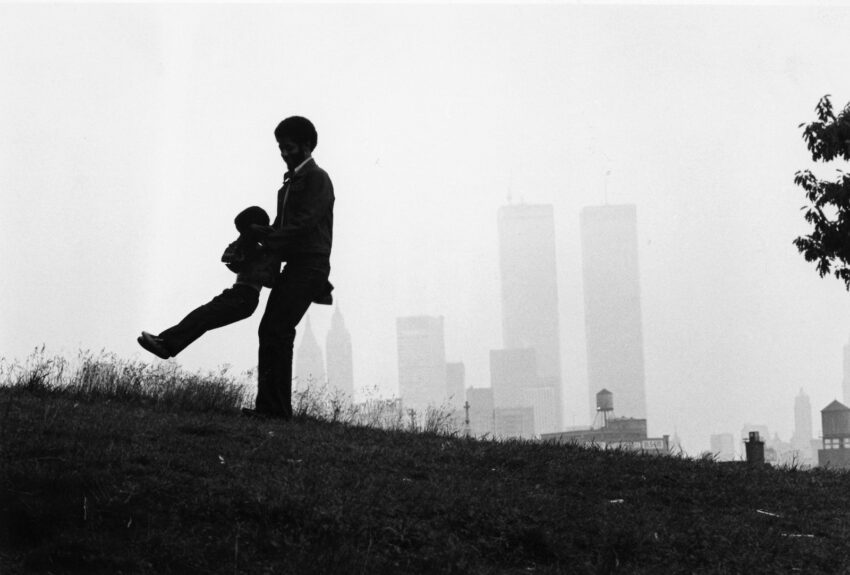
- “Last month, TEGNA-owned Locked On started the Locked On HBCU podcast, which covers historically Black colleges and universities’ . . . sports, athletes and culture,” Derrian Carter of the Cronkite School of Journalism reported Sept. 9. “There are 107 HBCUs, but the podcast focuses on the top conferences. Hosted by Reggie Flood, a well-known New Orleans radio sportscaster, the daily podcast also features TEGNA local TV news correspondents and anchors who cover or attended an HBCU. . . .”
- “Black Women In Radio (BWIR) is celebrating another milestone as an active partner of the Library of Congress’s Radio Preservation Task Force (RPTF),” the groups announced Aug. 25. “The RPTF was created by the Library of Congress’s National Recording Preservation Board (NRPB) in 2014 to facilitate preservation of, scholarship on, and educational uses of radio materials held by formal collecting institutions and private collectors throughout the country. In addition to the partnership, BWIR will actively participate in themed caucus groups and provide collections for inclusion in the National Radio Recordings Database and educational projects. . . .”
- “Eight news anchors and reporters from WMAQ-Channel 5 are collaborating on a weeklong series focusing on the epidemic of gun violence and bloodshed in Chicago,” Robert Feder reported Monday on his website on the Chicago television news business. ” ‘Violence in Chicago’ will air on the NBC-owned station’s 6 and 10 p.m. newscasts all week through Friday.”
- “On September 8, Jammu and Kashmir authorities raided the homes of four journalists in Srinagar before their temporary detainment and questioning,” the International Federation of Journalists said Monday. IFJ and its affiliate the Indian Journalists Union said they “condemn repressive acts by police intended to stifle press freedom.”
- Reporters Without Borders called Sept. 7 for “the immediate and unconditional release of Ma Thuzar, a journalist held arbitrarily since her arrest for no clear reason in Yangon, Myanmar’s biggest city, a week ago after four months in hiding.” Separately, on Sept. 6, a court in Myanmar extended the pre-trial detention of Danny Fenster, an American journalist in the military-led Southeast Asian nation who was arrested in May.
- Journal-isms is renewing its search for an assistant editor who would love to help produce this column. Position is part time, 15 to 20 hours weekly. Please see the “About” section of this website for more information.
To subscribe at no cost, please send an email to journal-isms+subscribe@groups.io and say who you are.
Facebook users: “Like” “Richard Prince’s Journal-isms” on Facebook.
Follow Richard Prince on Twitter @princeeditor
Richard Prince’s Journal-isms originates from Washington. It began in print before most of us knew what the internet was, and it would like to be referred to as a “column.” Any views expressed in the column are those of the person or organization quoted and not those of any other entity. Send tips, comments and concerns to Richard Prince at journal-isms+owner@
View previous columns (after Feb. 13, 2016).
View previous columns (before Feb. 13, 2016)
- Diversity’s Greatest Hits, 2018 (Jan. 4, 2019)
- Book Notes: Is Taking a Knee Really All That? (Dec. 20, 2018)
- Book Notes: Challenging ’45’ and Proudly Telling the Story (Dec. 18, 2018)
- Book Notes: Get Down With the Legends! (Dec. 11, 2018)
- Journalist Richard Prince w/Joe Madison (Sirius XM, April 18, 2018) (podcast)
- Richard Prince (journalist) (Wikipedia entry)
- February 2018 Podcast: Richard “Dick” Prince on the need for newsroom diversity (Gabriel Greschler, Student Press Law Center, Feb. 26, 2018)
- Diversity’s Greatest Hits, 2017 — Where Will They Take Us in the Year Ahead?
- Book Notes: Best Sellers, Uncovered Treasures, Overlooked History (Dec. 19, 2017)
- An advocate for diversity in the media is still pressing for representation, (Courtland Milloy, Washington Post, Nov. 28, 2017)
- Morgan Global Journalism Review: Journal-isms Journeys On (Aug. 31, 2017)
- Diversity’s Greatest Hits, 2016
- Book Notes: 16 Writers Dish About ‘Chelle,’ the First Lady
- Book Notes: From Coretta to Barack, and in Search of the Godfather
- Journal-isms’ Richard Prince Wants Your Ideas (FishbowlDC, Feb. 26, 2016)
- “JOURNAL-ISMS” IS LATEST TO BEAR BRUNT OF INDUSTRY’S ECONOMIC WOES (Feb. 19, 2016)
- Richard Prince with Charlayne Hunter-Gault,“PBS NewsHour,” “What stagnant diversity means for America’s newsrooms” (Dec. 15, 2015)
- Book Notes: Journalists Follow Their Passions
- Book Notes: Journalists Who Rocked Their World
- Book Notes: Hands Up! Read This!
- Book Notes: New Cosby Bio Looks Like a Best-Seller
- Journo-diversity advocate turns attention to Ezra Klein project (Erik Wemple, Washington Post, March 5, 2014)
When you shop @AmazonSmile, Amazon will make a donation to Journal-Isms Inc. https://t.co/OFkE3Gu0eK
— Richard Prince (@princeeditor) March 16, 2018

